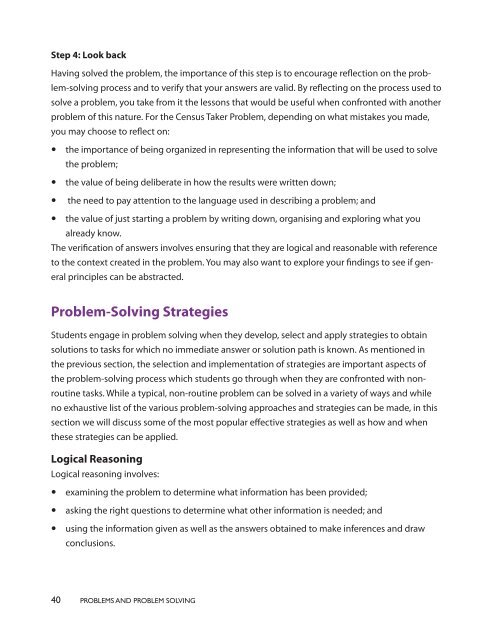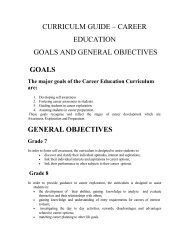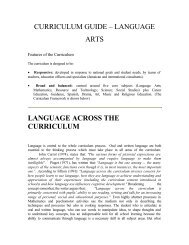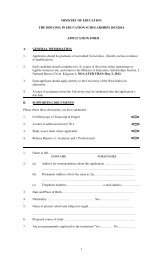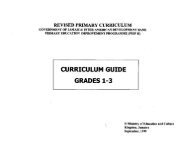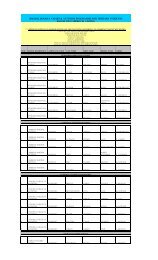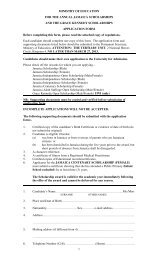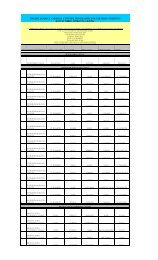Problems and Problem Solving - Ministry of Education
Problems and Problem Solving - Ministry of Education
Problems and Problem Solving - Ministry of Education
You also want an ePaper? Increase the reach of your titles
YUMPU automatically turns print PDFs into web optimized ePapers that Google loves.
Step 4: Look back<br />
Having solved the problem, the importance <strong>of</strong> this step is to encourage reflection on the problem-solving<br />
process <strong>and</strong> to verify that your answers are valid. By reflecting on the process used to<br />
solve a problem, you take from it the lessons that would be useful when confronted with another<br />
problem <strong>of</strong> this nature. For the Census Taker <strong>Problem</strong>, depending on what mistakes you made,<br />
you may choose to reflect on:<br />
•y<br />
•y<br />
•y<br />
the importance <strong>of</strong> being organized in representing the information that will be used to solve<br />
the problem;<br />
the value <strong>of</strong> being deliberate in how the results were written down;<br />
the need to pay attention to the language used in describing a problem; <strong>and</strong><br />
•y the value <strong>of</strong> just starting a problem by writing down, organising <strong>and</strong> exploring what you<br />
already know.<br />
The verification <strong>of</strong> answers involves ensuring that they are logical <strong>and</strong> reasonable with reference<br />
to the context created in the problem. You may also want to explore your findings to see if general<br />
principles can be abstracted.<br />
<strong>Problem</strong>-<strong>Solving</strong> Strategies<br />
Students engage in problem solving when they develop, select <strong>and</strong> apply strategies to obtain<br />
solutions to tasks for which no immediate answer or solution path is known. As mentioned in<br />
the previous section, the selection <strong>and</strong> implementation <strong>of</strong> strategies are important aspects <strong>of</strong><br />
the problem-solving process which students go through when they are confronted with nonroutine<br />
tasks. While a typical, non-routine problem can be solved in a variety <strong>of</strong> ways <strong>and</strong> while<br />
no exhaustive list <strong>of</strong> the various problem-solving approaches <strong>and</strong> strategies can be made, in this<br />
section we will discuss some <strong>of</strong> the most popular effective strategies as well as how <strong>and</strong> when<br />
these strategies can be applied.<br />
Logical Reasoning<br />
Logical reasoning involves:<br />
•y<br />
•y<br />
•y<br />
examining the problem to determine what information has been provided;<br />
asking the right questions to determine what other information is needed; <strong>and</strong><br />
using the information given as well as the answers obtained to make inferences <strong>and</strong> draw<br />
conclusions.<br />
40 PROBLEMS AND PROBLEM SOLVING<br />
<strong>Problem</strong><strong>Solving</strong>.indd 40<br />
8/24/12 6:55:53 PM


